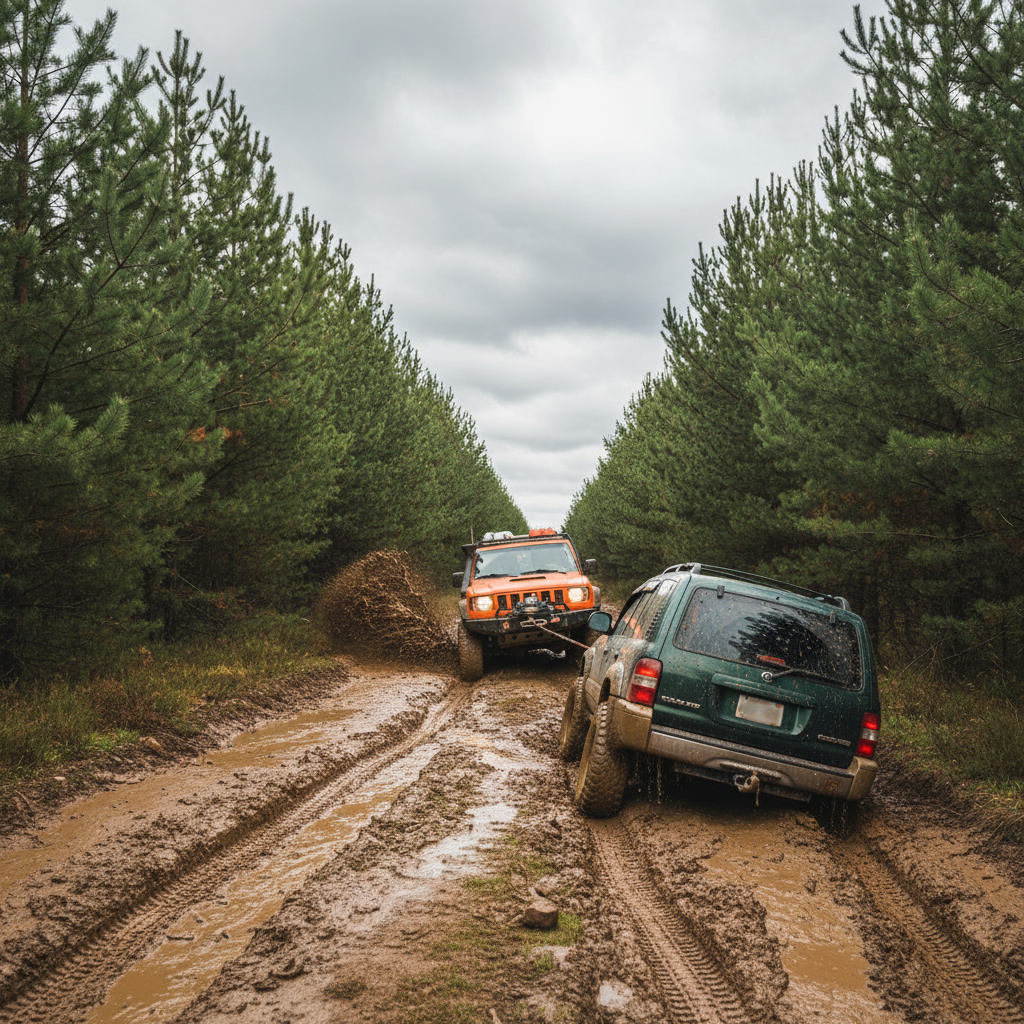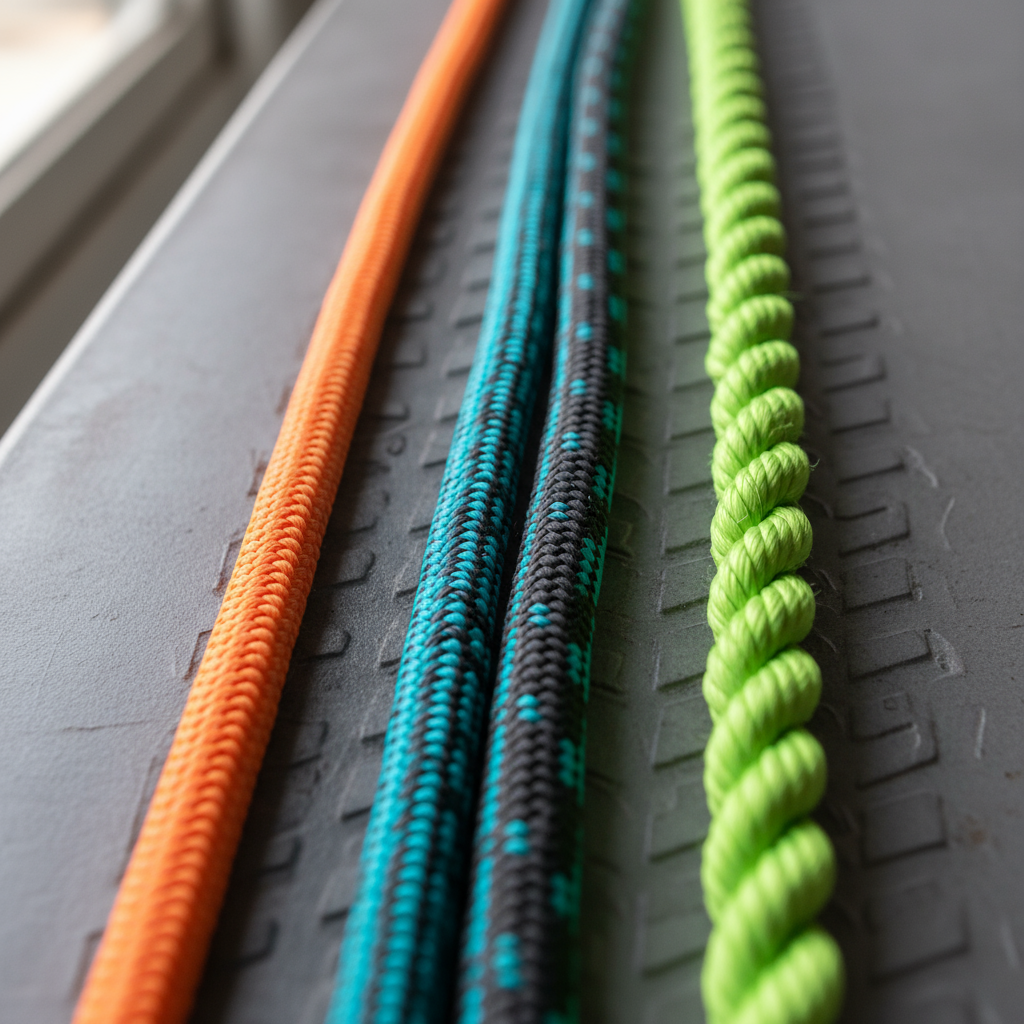12 mm braided nylon lifts 3 800 lb (≈ 1 720 kg) and stretches 15 % to give you roughly 20 % more pull efficiency on muddy recoveries.
Key takeaways – ~2 min read
- ✓ Boost off‑road recovery load capacity by up to 25 % with the right braid.
- ✓ Reduce rope weight by 30 % while maintaining peak strength.
- ✓ Extend service life by 40 % thanks to superior abrasion resistance.
- ✓ Streamline branding and packaging for wholesale orders.
Many off‑road enthusiasts assume the bulkier the rope, the tougher it is — a belief that often leads to lugging unnecessary weight into the wilderness. However, data shows a 12 mm braided nylon, with its 3 800 lb (1,720 kg) breaking strength and 15 % elastic give, actually delivers superior pull control and up to 20 % faster recoveries than a thicker steel‑core line. This article will explain why this surprising choice excels across all terrains, and how iRopes can customise it to your specific requirements.
Understanding the strongest rope material
When discussing off‑road recovery, the primary question often arises: “Which rope material is strongest?” The definitive answer is HMPE (High Modulus Polyethylene), commonly marketed as Dyneema, Spectra, or UHMWPE. Its unique molecular structure provides a tensile strength up to fifteen times that of steel by weight, yet it remains light enough to integrate into a compact recovery kit.

Before comparing different rope brands, it's crucial to understand the three key metrics that govern a rope’s performance.
- Tensile strength – This is the maximum force a rope can withstand before failure, typically measured in pounds or newtons.
- Working Load Limit (WLL) – Represents the safe load a rope should carry, generally calculated as one‑fifth of its breaking strength.
- Material impact – The fibre type dictates the rope's weight, stretch, abrasion resistance, and its behaviour under sudden shock loads.
HMPE’s claim of being “15 × steel strength” isn’t merely marketing; it’s a reflection of its unique composition. Because its fibres are drawn into ultra‑thin strands, a 12 mm HMPE line can match the lifting capacity of a 20 mm steel cable. Furthermore, it floats on water and exhibits excellent UV degradation resistance. The primary trade‑off is its minimal elasticity, which is advantageous for precise, predictable pulls during winching operations.
- HMPE (Dyneema, Spectra) – Offers up to 15 × steel strength‑to‑weight, floats, and provides excellent abrasion and UV resistance.
- Aramid (Kevlar, Technora) – Known for very high tensile strength and heat tolerance, though it requires UV‑protective sheathing for outdoor use.
- PBO (Zylon) – Delivers exceptional strength and minimal stretch, but is vulnerable to moisture and necessitates careful handling.
“When you need a rope that won’t add weight to your recovery kit, HMPE is the material that delivers the absolute strongest performance per kilogram.” – iRopes material engineer
In practical terms, HMPE is the preferred choice for winch lines and kinetic recovery ropes where weight reduction is paramount. Aramid or PBO, conversely, are typically reserved for specialised applications demanding extreme heat resistance. Understanding these material fundamentals sets the stage for exploring why nylon remains a robust contender for off‑road applications.
Why the strongest nylon rope excels in off‑road applications
Having reviewed the material fundamentals, you can appreciate why nylon frequently emerges victorious in rugged recovery scenarios. Its high tensile strength provides the capacity to handle massive loads, while its inherent elasticity functions as a built‑in shock absorber. When a bogged 4x4 is suddenly pulled free, the rope stretches just enough to mitigate the abrupt force, safeguarding both the vehicle’s chassis and the rope fibres from harsh impact.
For those debating between braided or twisted nylon rope, the answer is unequivocally clear: braided nylon surpasses twisted nylon in strength. Braiding interlocks multiple strands, distributing the load evenly and preventing kinks. In contrast, twisted (three‑strand) constructions introduce weaker points at each turn, compromising overall strength and durability.

These properties directly translate into advantages across three common off‑road tasks. A kinetic recovery line leverages the rope’s elastic give to pull a stuck vehicle without jarring its suspension. Tow straps also benefit from this stretch, enabling controlled pulls when a vehicle is winched uphill. Additionally, winch accessories such as snatch blocks utilise nylon’s strength and elasticity to manage the rapid tension spikes that occur during winching operations, ensuring smoother, safer recovery.
Braided
Offers higher tensile strength and smoother handling on pulleys, making it the preferred choice for recovery lines.
Elasticity
Nylon’s stretch absorbs shock, protecting both vehicle and rope during sudden pulls.
Twisted
Its simpler construction results in lower strength and can lead to kinking under heavy loads.
Low stretch
Materials like HMPE have minimal stretch, ideal for precise winching but less forgiving than nylon.
Off‑Road Essentials
• Kinetic recovery lines – The stretch of the strongest nylon rope allows for pulling a stuck vehicle without harsh jarring.
• Tow straps – Elastic give ensures a controlled, steady pull on steep inclines.
• Winch accessories – Nylon’s strength and shock‑absorption capabilities keep snatch blocks and rollers functioning smoothly under sudden loads.
Considering these advantages, the next logical step is to explore how different braid constructions, such as solid braid, double braid, or twisted three‑strand, further influence durability and handling in challenging field conditions.
Selecting the strongest rope braid for maximum durability
Building on the material fundamentals, we now examine how various braid constructions – solid braid, double braid, or twisted three‑strand – further impact a rope's durability and handling in the field.

When selecting a braid, consider three primary factors: load capacity, the need for shock absorption, and how the rope will be handled in situ. A solid braid offers a uniform, smooth surface that glides easily over pulleys, making it ideal for steady, high‑tension pulls. Double‑braid designs feature a core protected by an outer sheath, providing enhanced abrasion resistance while retaining the expected elasticity of nylon. Twisted three‑strand ropes, while simpler to splice, introduce potential weak points at each turn, which can reduce overall durability under repeated shock loads compared to braided alternatives.
Braid Types
How construction affects performance
Solid Braid
A uniform weave that delivers high tensile strength and low friction on winch drums.
Double Braid
A core‑plus‑sheath construction that adds abrasion resistance while preserving nylon’s elasticity.
Twisted 3‑Strand
A simple twist that is easy to splice but creates stress concentrations under shock loads.
Key Benefits
What you gain from each
Highest Strength
Solid braid maximises load capacity for heavy‑duty recovery lines.
Balanced Stretch & Protection
Double braid expertly blends nylon’s shock‑absorbing stretch with a protective outer layer.
Easy Handling
Twisted ropes are straightforward to splice, proving useful for quick field repairs.
Match the braid to the load class – solid braid for steady pulls, double braid for shock‑loaded recoveries, and twisted rope only when splice speed outweighs strength concerns.
By carefully weighing these construction traits against your specific off‑road tasks, you can select the strongest rope braid that offers both durability and the right amount of give. The final segment of our guide will demonstrate how iRopes tailors these braid choices into custom solutions to meet your exact load and handling requirements.
Need a customised off‑road rope solution?
For off‑road recovery, nylon remains a top contender for the strongest rope material, thanks to its high tensile strength and elastic shock‑absorption. The strongest nylon rope expertly combines durability with just enough stretch to protect your vehicle and equipment. Meanwhile, selecting the strongest rope braid — whether solid or double braid — delivers the necessary durability for heavy‑duty pulls. If you need personalised advice on tailoring a rope to your exact requirements, please complete the form above, and our iRopes specialists will contact you promptly.